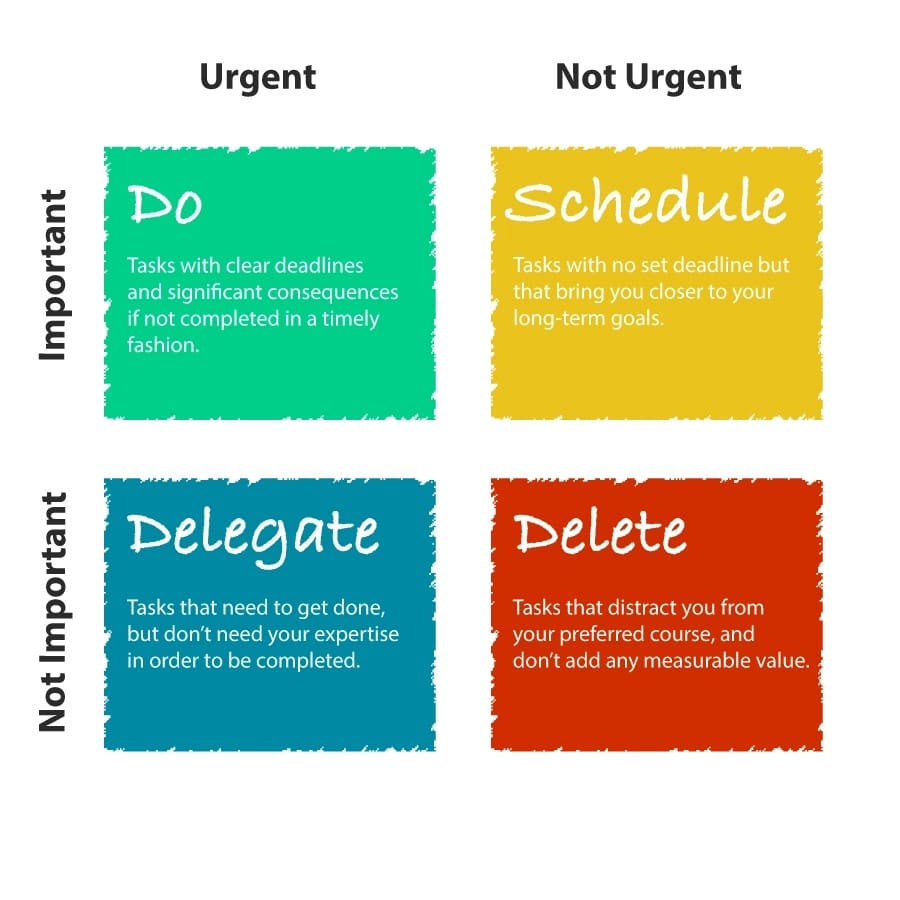Mastering Productivity: The Eisenhower Matrix and Effective Leadership

In the fast-paced and demanding world of leadership, the ability to prioritize tasks and make decisions swiftly is crucial. Juggling multiple responsibilities can be overwhelming, often leading to inefficiency—and at worst, burnout. So, we wanted to introduce a simple but powerful tool that can transform how leaders manage their time and responsibilities—the Eisenhower Matrix. Named after the 34th President of the United States, Dwight D. Eisenhower, this matrix provides a systematic approach to prioritization, helping leaders become more effective and focused.
Understanding the Eisenhower Matrix:
The Eisenhower Matrix is a simple four-quadrant grid that categorizes tasks based on their urgency and importance. The four quadrants are:
Urgent and Important (Quadrant I):
-
- These are tasks that require immediate attention.
- Leaders should focus on completing these tasks promptly to prevent crises.
Important, but Not Urgent (Quadrant II):
-
- Tasks in this quadrant are significant for long-term goals and success.
- Leaders should allocate time for strategic planning, personal development, and relationship building to prevent future crises.
Urgent, but Not Important (Quadrant III):
-
- These tasks may seem pressing, but they do not contribute significantly to long-term goals.
- Delegation or finding efficient ways to handle these tasks is key to freeing up valuable time.
Not Urgent and Not Important (Quadrant IV):
-
- These tasks are neither urgent nor important.
- Leaders should aim to minimize time spent on these activities.

So, how does the Eisenhower Matrix enhance leadership effectiveness?
- Prioritization: The matrix helps leaders clearly identify and prioritize tasks, ensuring they focus on what truly matters. By distinguishing between urgent and important tasks, leaders can allocate their time and resources more effectively.
- Time Management: Leaders often find themselves overwhelmed with a plethora of tasks. The Eisenhower Matrix aids in effective time management by encouraging leaders to invest time in Quadrant II activities—those that contribute to long-term success—while minimizing time spent on urgent but less significant tasks.
- Preventing Burnout: Constantly dealing with urgent tasks can lead to burnout. The matrix encourages leaders to proactively manage their time, reducing the likelihood of emergencies and allowing for a healthier work-life balance.
- Strategic Planning: Quadrant II is reserved for tasks that are important but not urgent. This quadrant is the breeding ground for strategic planning, innovation, and personal development. Leaders can dedicate time to envision the future, set goals, and invest in their own growth.
- Enhancing Decision-Making: Armed with a clear understanding of task urgency and importance, leaders can make informed decisions. This helps in avoiding the trap of constantly reacting to urgent matters and instead enables a more proactive approach to leadership.
In the demanding landscape of leadership, the Eisenhower Matrix stands as a beacon for effective decision-making and time management. By systematically categorizing tasks, leaders can navigate the complex web of responsibilities with greater ease, ultimately fostering success and well-being. Embracing the principles of the Eisenhower Matrix is not just a strategy; it’s a mindset that empowers leaders to lead with purpose and efficiency.
Interested in learning more tips to become a greater leader? Consider enrolling in The Leadership Advantage—CMA’s comprehensive leadership program.
